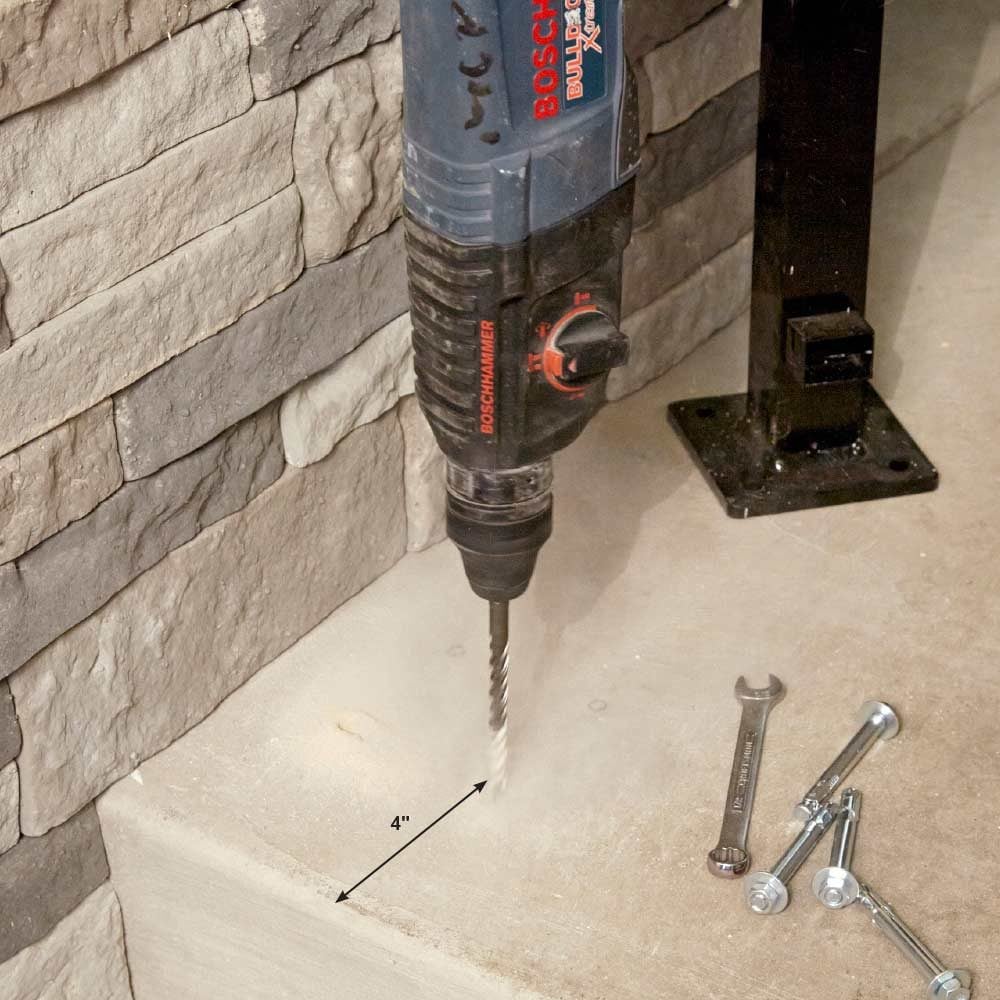
Don’t Drill too Close to Edges
Two mistakes you really want to avoid are busting off a chunk of a concrete stair step and cracking the corner of a patio slab. To avoid these disasters, don’t drill any closer than 4 in. from the edge. If there’s no other option, turn off the hammering action on the drill. Also, avoid wedge-type anchors. They exert a ton of outward pressure, which could literally “wedge” the concrete apart.
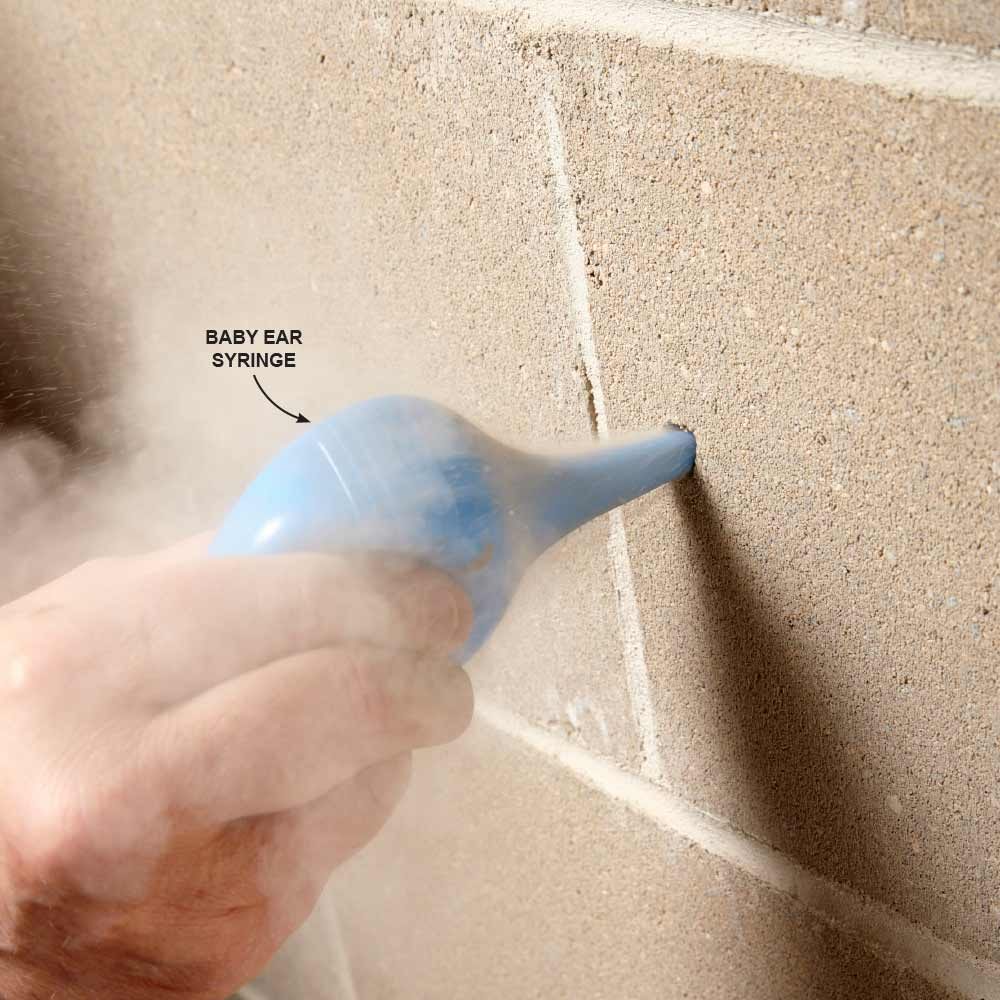
Blow Out the Dust
If drilling dust is left in the hole, it can prevent the fasteners from being driven all the way in. So remove it with a vacuum or blower. A baby’s ear syringe (about $5 at any drugstore) works great for this and doesn’t take up much room in a toolbox. Just shove it into the hole and puff out the dust.

Drill Right Through the Wood
Masonry drill bits will also plow through wood, so don’t be afraid to drill right through the wood and into the wall or slab. That makes it a lot easier to get the furring strip, or whatever you’re working with, exactly where you want it. Drill one hole and install that fastener first. (You’ll have better luck holding the board in place if you drill the first hole toward the middle.) Then go back and drill the rest of the holes and install those fasteners.
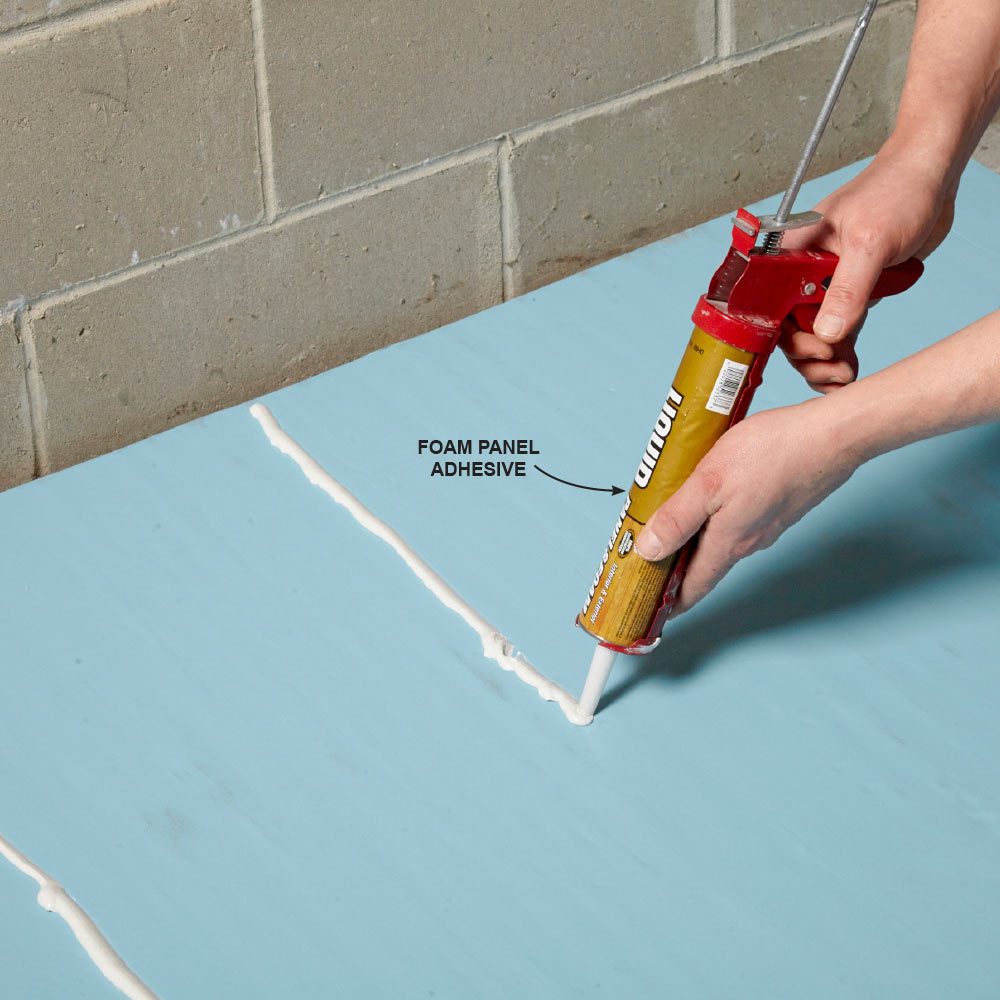
Use Panel Adhesive on Foam Insulation
When you’re fastening foam boards to a concrete or block wall, make sure you use a construction adhesive that’s specially designed for foam. Regular construction adhesive can melt through the foam, causing your panels to fall off 10 minutes after you put them up.
Note: You may want to waterproof the walls first, and if so, your local building codes may require you to seal all the seams. Check with a local building official for those details.

Minimize Masonry Fastening
Fastening to masonry isn’t all that difficult, but fastening to wood is easier; that’s why we attach drywall to furring strips instead of directly to concrete walls. For projects that require a bunch of fasteners, like a column of shelving, install strips of pressure-treated wood with a couple of fasteners, and attach the shelf brackets to that. You’ll save the expense and drudgery of all those extra masonry fasteners.
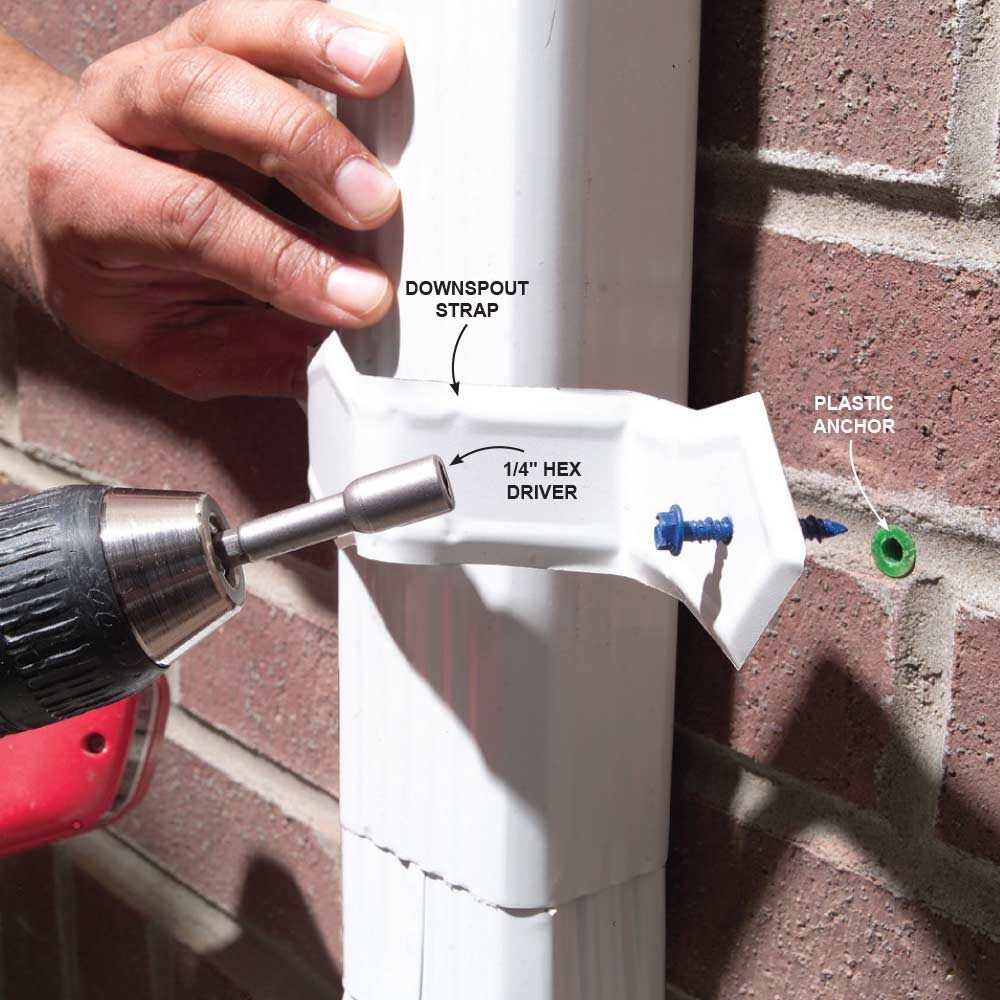
Don’t Drill Into Brick
Whenever you install a lightweight item like a downspout on brick, always drill into the mortar joints instead of the brick face. The brick is more likely to crack, and if the downspout ever needs to be moved, patching a hole in gray mortar is a lot easier than trying to match the color of the brick. Also, always install plastic anchors because metal anchors are more likely to crack the mortar when they expand.

Pound on the nut
We recommend sleeve anchors for heavy-duty projects. To install them, all you need to do is drill a hole, tap them in and then tighten the nut. Don’t tap directly on the bolt or you could damage the threads, making the nut nearly impossible to remove and reinstall. Loosen the nut so it extends slightly beyond the bolt to protect the threads, and then tap on the nut instead.

What You Should Know About Concrete Screws
Using concrete screws is fast and easy—you just drill a hole and screw them in the same as a wood screw. They work great for light- to medium-duty tasks like fastening shelving brackets, plumbing straps, electrical boxes and furring strips. Concrete screws don’t work well on old, crumbling concrete. And they lose much, if not all, of their holding power when they’re removed and reused in the same hole, so if you do have to pull one out, try to drill a new hole in another location.
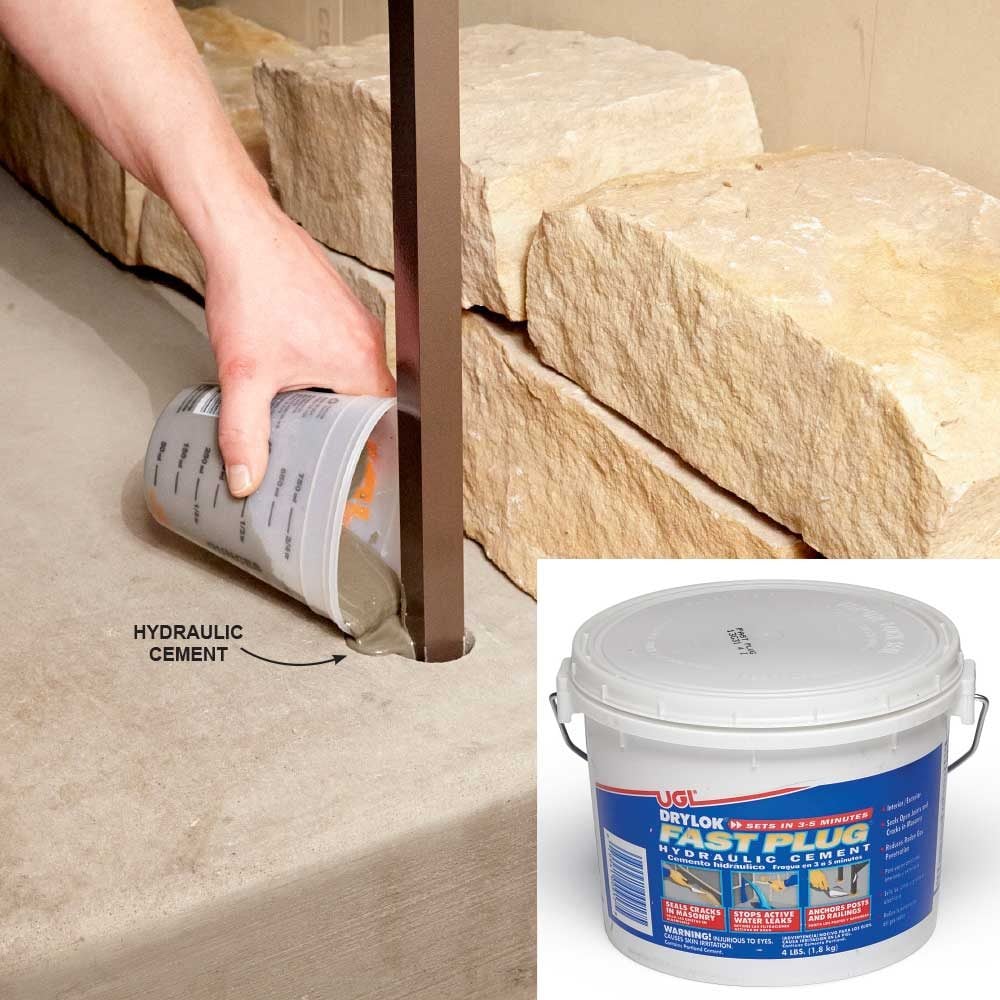
Hydraulic Cement Prevents Cracking
When you’re fastening posts, poles, large bolts or rebar to concrete, drill an oversize hole and fill it with hydraulic cement. Hydraulic cement creates an extremely strong and weatherproof bond. It also holds up to repeated movement, which is why professional metal railing installers use it to anchor posts.
Hydraulic cement comes in a powder form and needs to be mixed with water. Soak (but don’t fill) the hole with water from a spray bottle; otherwise moisture will be sucked out of the mix by the surrounding concrete. And be sure you’re ready to go before you mix the cement—it dries in three to five minutes.
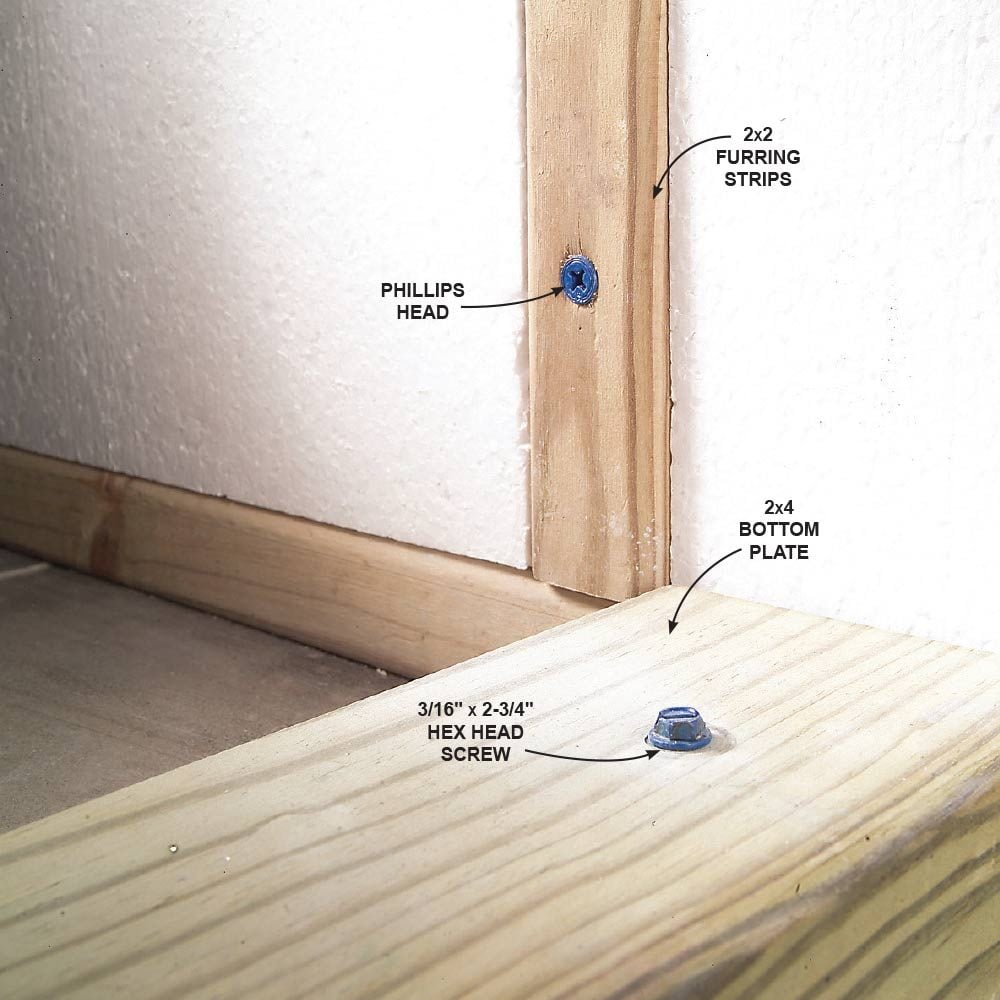
Hex vs. Flathead Screws
Hex-head screws are less likely to strip out, so use them when the screw head can sit proud of the surface, as it can on sill plates and plumbing straps. Flathead screws are the way to go when the screw head needs to be flush, such as with furring strips that will be clad with drywall or plywood.
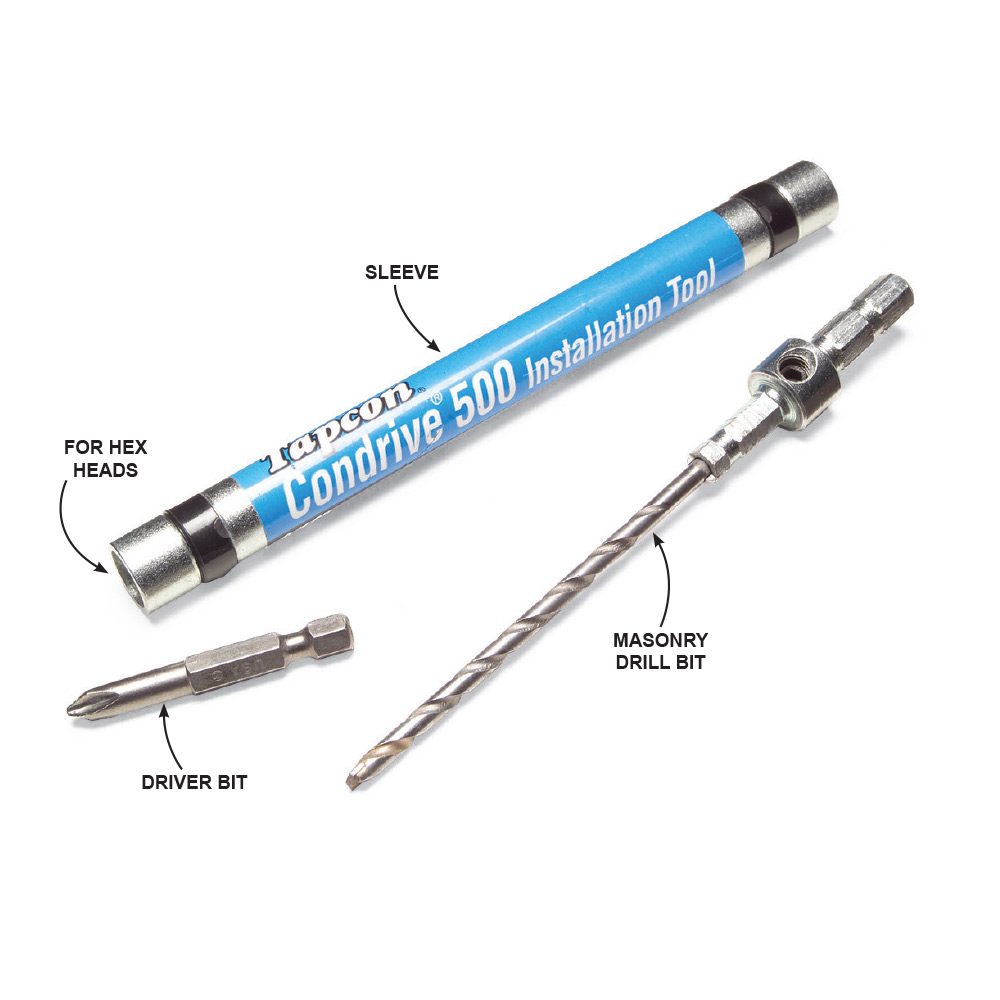
Drill/Bit Combo Speeds Up the Process
Installing concrete screws is even faster with a drill bit/driver combination set like this one. The drill bit is covered by the removable sleeve that contains the driver. That way you don’t need to have two drills on hand, or to keep switching between drill bit and driver.

Drill 1/4 in. Deeper than the Length of the Screw
Set the depth gauge on your drill so the hole is 1/4 in. deeper than the length of the screw, keeping in mind the thickness of the material you’re working with. If your drill doesn’t have a depth gauge, wrap a little tape around the bit so you’ll know when to stop. Always drill the proper diameter hole. The container the screws come in will indicate which size bit to use. A bit is included in some larger containers.
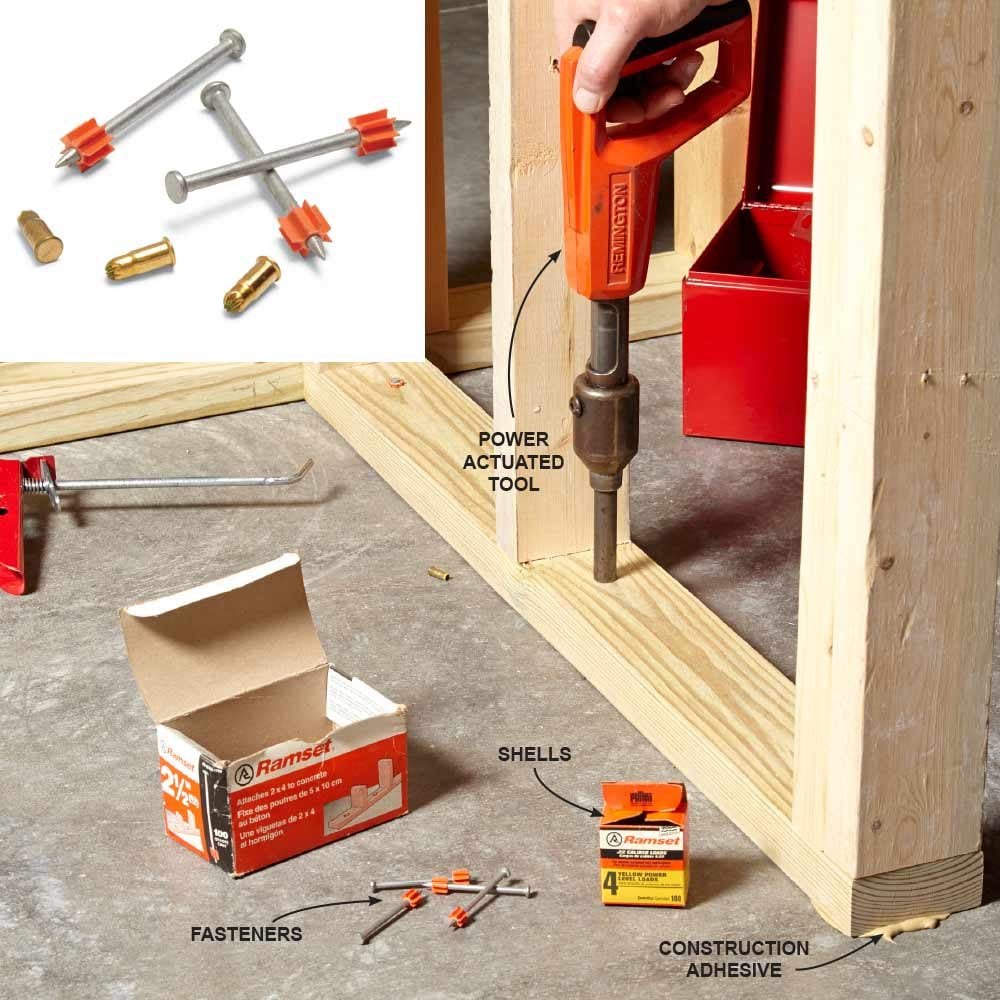
Fasten Bottom Plates with a Powder-Actuated Tool
Many pro framers say the fastest way to attach bottom plates to a slab is with a powder-actuated tool (PAT). Most residential-grade PATs are powered by .22 caliber blank cartridges, which drive in nail-like fasteners. Place the fasteners about 5 ft. apart and within 6 in. of the end of a wall. Also, add a little construction adhesive for more holding power.
The PATs that require a hammer blow to fire the load and those that have a trigger are both available at home centers. Buy 2-1/2-in. fasteners so they will penetrate the concrete about 1 in. to 1-1/4 in. Wear safety glasses as well as hearing protection—these tools are loud.